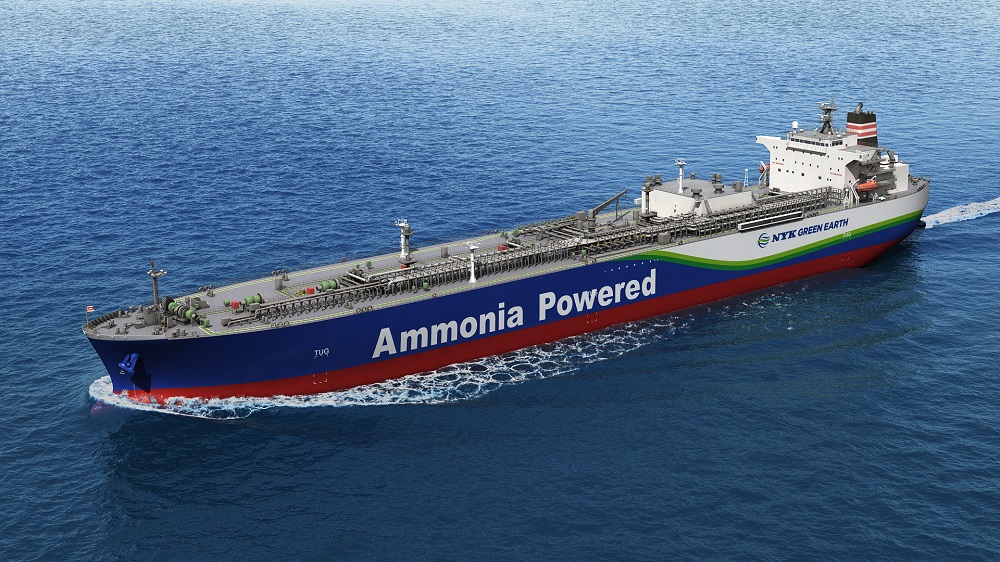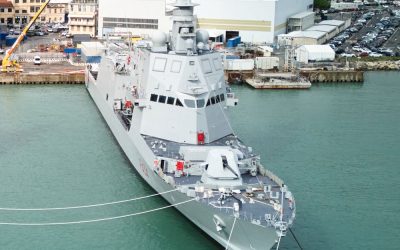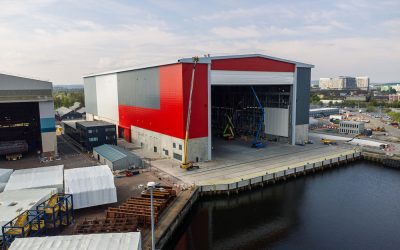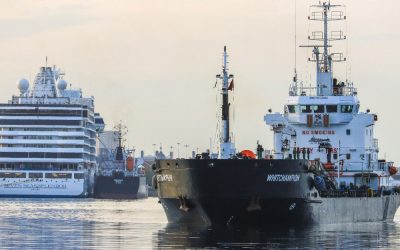In a move towards harnessing more sustainable technology, Nippon Yusen Kabushiki Kaisha (NYK), Japan Engine Corporation, IHI Power Systems Co., and Nihon Shipyard Co., Ltd. have inked contracts for the construction of the world’s first ammonia-fueled medium gas carrier (AFMGC).
The vessel, a 40,000 m³ type ammonia fuel ammonia carrier, is set to be delivered in November 2026. With Japan Marine United Corporation’s Ariake Shipyard overseeing construction, the vessel will feature engines by Japan Engine Corporation and IHI Power Systems.
The initiative, part of Japan’s New Energy and Industrial Technology Development Organization’s (NEDO) Green Innovation Fund Project, aims to contribute to net-zero emissions in international shipping. Ammonia, chosen for its carbon-neutral combustion, is one of several green fuel options that has been flagged as a possible game-changer in the maritime sector’s efforts to reduce its greenhouse gas emissions.
The consortium of businesses envisions not only the development of ammonia-fuelled ships but also the establishment of a comprehensive ammonia value chain, diversifying its usage from traditional applications like fertiliser to co-firing in power plants and as a hydrogen carrier.
Additionally, the project seeks to fortify Japan’s maritime industry, positioning it as a global leader in environmentally friendly shipping. With over 99% of its imports and exports relying on maritime transportation, Japan recognises the strategic importance of innovation in this sector. NYK and their partner company’s see the transition to zero-emission fuels as an opportunity to leverage Japan’s technological competence, offering ships with high environmental performance and safety.
While the group of companies acknowledge the absence of international rules for ammonia-fuelled ships, they plan to actively engage with the International Maritime Organization (IMO) to contribute insights gained from the AFMGC project.
Major technical elements include the development of ammonia fuel dual-fuel engines, ensuring high ammonia co-firing ratios for optimal greenhouse gas reduction. Challenges such as flame retardancy of ammonia, treatment of nitrous oxide emissions, and ammonia toxicity have been addressed through innovative design and rigorous safety measures.
Designing ammonia-fuelled vessels presented several challenges, including addressing the flame retardancy of ammonia and minimising nitrous oxide emissions. The prototype vessel secured Approval in Principle (AiP) in September 2022 after meticulous safety verifications. Safety guidelines for ammonia-fuelled ships have been published, showcasing the consortium’s commitment to transparency and industry-wide collaboration.
Safety measures have been paramount, with ClassNK conducting risk assessments and the consortium proposing draft safety requirements to the IMO. In May 2023, IHI Power Systems achieved stable combustion of fuel ammonia at an 80% co-firing rate, demonstrating virtually zero emissions of nitrous oxide and unburned ammonia. The consortium is on track to achieve its goal of an 80% or more reduction in greenhouse gas emissions for the entire fleet.
As the consortium moves toward the vessel’s completion in November 2026, the focus shifts to manufacturing engines, detailed studies for construction, and preparing an operation manual. After completion, the vessel will undergo operational demonstrations to gather user feedback for further improvements, establishing a development cycle that will feed the development of future ammonia-fuelled vessels.
The construction of the ammonia-fuelled ammonia gas carrier represents an important moment in in the Japanese shipbuilding industry’s transition towards a more environmentally sustainable future. The consortium also hopes that the construction of the vessel will set a trend for larger carriers of similar specifications in future.






